Vowel harmony and noun inflection in Caucasian Urum
Vowel harmony and noun inflection in Caucasian Urum
Vowel harmony and noun inflection in Caucasian Urum
Create successful ePaper yourself
Turn your PDF publications into a flip-book with our unique Google optimized e-Paper software.
(b)‘of his/her/its houses’at-lar-ın-ınhorse-PL-3.SG.POSS-GEN‘of his/her/its horses’Plural mark<strong>in</strong>g follows the rules <strong>in</strong>dicated above. Given that the genitive suffixesfollow<strong>in</strong>g the plural suffixes are always <strong>in</strong> the context of an unrounded trigger<strong>in</strong>g vowel,they are expected to be -ın, i.e. carry<strong>in</strong>g the unroundet back high vowel /ı/ follow<strong>in</strong>g the<strong>Urum</strong> pattern given <strong>in</strong> Table 4. Furthermore, word-f<strong>in</strong>al realization of the 3 rd personpossessive suffix is expected to be /i/ follow<strong>in</strong>g the pattern given <strong>in</strong> Table 5. Bothexpectations are largely corroborated by the data <strong>in</strong> this part of the study; only a fewexceptions to this are attested. The patterns for the sequence ‘PL-GEN’ are given <strong>in</strong> (10).(10) Results: Production of plural <strong>and</strong> genitive -lAr-In(a) front, -roundit-ler-ın ‘dog-PL-GEN’, ev-ler-ın ‘house-PL-GEN’(b) front, +roundüzüg-ler-ın ‘r<strong>in</strong>g-PL-GEN’, göl-ler-ın ‘lake-PL-GEN’(c) back, -roundġız-lar-ın ‘girl-PL-GEN’, at-lar-ın ‘horse-PL-GEN’(d) back, +rounddonguz-lar-ın ‘pig-PL-GEN’, yol-lar-ın ‘road-PL-GEN’The last suffix sequence to be reviewed is that of the 3 rd person possessive <strong>and</strong> thegenitive suffixes -(s)In-In. From Table 5 we know that <strong>in</strong> word f<strong>in</strong>al position the 3 rdperson possessive suffix is <strong>in</strong>variably /i/. As <strong>in</strong> st<strong>and</strong>ard Turkish, the third personpossessive suffix takes an /n/ if it is <strong>in</strong> non-f<strong>in</strong>al position. Thus, it displays the same shapeas the genitive suffix <strong>in</strong> the examples we tested (i.e. words with consonant-f<strong>in</strong>al roots).The first result of our elicitation study concern<strong>in</strong>g the realization of the <strong>in</strong>tendedsequence ‘3.SG.POSS-GEN’ is that – as is also usual <strong>in</strong> <strong>in</strong>formal Turkish style – <strong>in</strong> a part ofthe data the speakers only realized the genitive suffix <strong>and</strong> left out the possessive marker


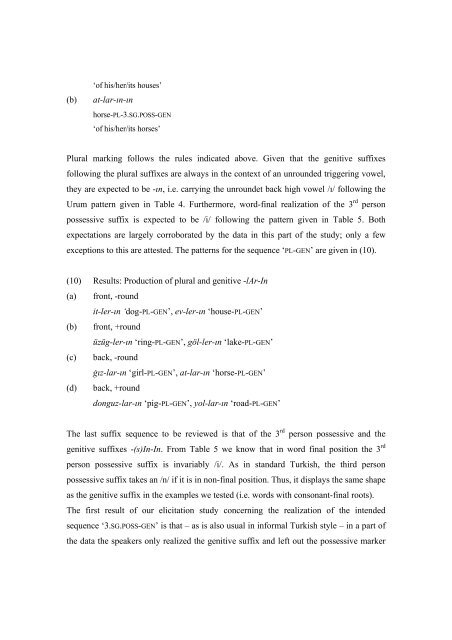
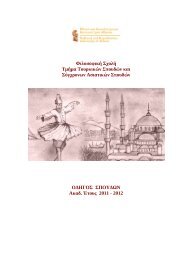
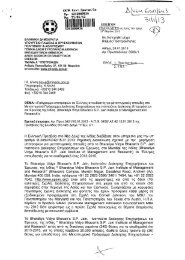
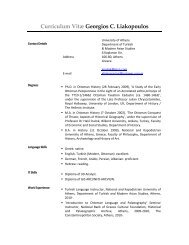
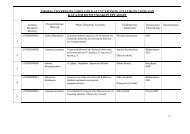


![Panagiotis C. Poulos[cv]](https://img.yumpu.com/6513871/1/190x245/panagiotis-c-pouloscv.jpg?quality=85)